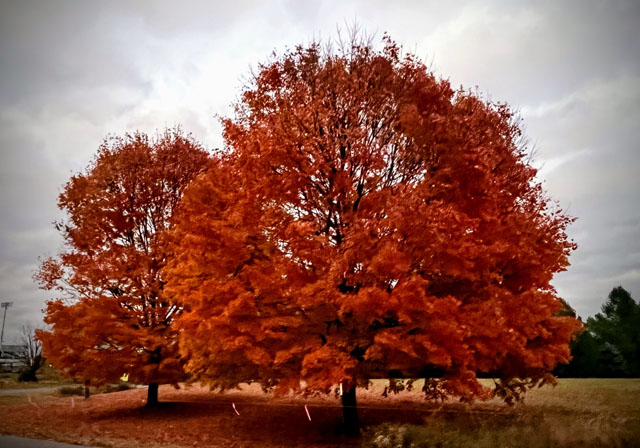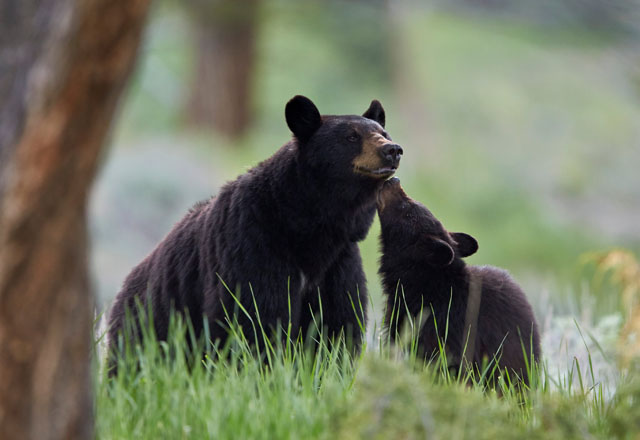Autumn’s Magic
01 Oct 2025
Fall color and photosynthesis
October-November 2025
Written By: Story and photos by Kristin Landfield

Everywhere I turn, it seems that birds are taking flight. They lift high in their annual choreography, migrating in disciplined formation to warmer zones. Subtle cues from the changing season activate their DNA, and instinct tells them just what to do, just where to go. Like giant mushrooms that spontaneously appear when the temperature drops, the birds’ instinctual patterns are among the myriad miracles dictated by the season’s autumnal shift.
When temperatures begin to fall, we humans have our own patterns, though they are snared in the trappings of modern life. We seek coziness. We know to pull out our comfy sweaters and warm fleece vests. Often, our fluffy sweaters and seasonal throws are spun to reflect the hues of the changing leaves around us, whose glorious colors inspire the palette of the season. Ironically, we add layers to our bodies just as the landscape around us prepares to disrobe in its perennial offering. This is a world replete with rhythms. In autumn, such rhythms take on further resonance, lit by the technicolor cessation of photosynthesis.
I cannot decide which is the best way to experience the magic of autumn. There are those perfect fall days, when the electric hue of a crisp blue sky presents a cerulean stage for the autumnal theatre. A fiery patchwork of color descends along the Appalachian slopes, as though chasing warmer temperatures down into the valleys. There is a moment wherein green no longer reigns over the land and colorful leaves still cling brightly to their branches, ignorant of their impending drop and decay. It is as though the easy breeze whispers “pay attention, savor this moment”.
Then there are those moody soft days, damp and musky from the rainy night before, when a heavy morning mist swaths the land in mystery and a little heartache. An overnight storm loosened leaves from their limbs and cast gold toward the forest floor. The warm tones of the Beech woods now glow beneath a muted sky. This shifting atmosphere awakens us to the passage of time; it softens us with grief and gratitude and reminds our bones of the chill to come. Amid the changing light and temperature, we feel nostalgic and we make hearty soups. Meanwhile, we bear unwitting witnesses to the elegant equation of photosynthesis. In autumn, what appears to our eyes as a magical array of color, with the power to ignite our imaginations and the landscape alike, is in fact a reflection of the biological engine that powers the breathing body of planet earth.
Photosynthesis is the process by which green plants, algae, and some bacteria convert light energy into chemical energy. During photosynthesis, plants capture sunlight to transform water and carbon dioxide into sugar and oxygen. Within their cells, plants harbor chlorophyll, a green pigment that absorbs the photons of light needed for photosynthesis. Sugars yielded by this process form vegetative structures, thus supplying carbohydrates that fuel the entire food chain. As a byproduct of the reaction, oxygen circulates into the atmosphere, providing clean air for respiration. Once organic matter disassembles (i.e., decays), carbon dioxide is released, which in turn powers the next photosynthetic cycle. The symbiotic elegance of this system is staggering.
During the summer months, there is an abundance of light, allowing plants to focus on vegetative growth. Consequently, their leaves are saturated with chlorophyll and rendered green. When the season shifts, shorter days and cool temperatures alert plants to curtail photosynthetic production and begin storing sugars for the following year. As photosynthesis slows, chlorophyll diminishes, and other pigments (yellows of xanthophylls, oranges of carotenoids, and reds and purples of anthocyanins) become more apparent. This is what we observe as the leaves “changing colors”—a decommissioning of chlorophyll. The decay process, which begins before any visible change in leaf color, is a survival mechanism that allows plants to store nutrients and protect from cellular damage during freezing temperatures and darker days.
As humans, who cannot resist seeing metaphor and meaning in our surroundings, we find wisdom in autumn’s senescent processes. The same complex mechanism that transforms light into life is also our teacher, generously showing us that in loss there is revelation. Photosynthesis demonstrates that when one beauty fades, another is revealed. As in biology, there are likewise seasons in our hearts. We know there are times to build and to grow, times to gather, times to reorganize and repurpose, and times to recede. When summer’s abundance wanes—her extravagance of green, of warmth, of flowers, and of light—dusk comes quickly to remind us that “nothing gold can stay.” Like plants, we, too, recognize the liminal light of autumn as a signal to reconcile and let go, to savor and store, and to hunker down for the leaner months to come.












